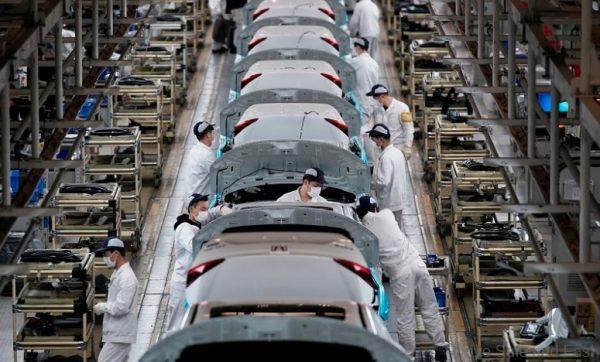Honda needs a factory that can churn out hundreds of thousands of electric vehicles in China, and this Wuhan one will be it.
The industry is shifting towards electric vehicles and no car brand can afford to be left behind. While Honda does have a successful electric vehicle, the Honda e, it has yet to roll out a mass-market EV for public consumption. The Honda e is sold only in limited markets. To meet future demand for EVs, Honda Motor (China) Investment and Dongfeng Honda Automobile Co., Ltd will be building a new dedicated electric vehicle production plant to expand its EV lineup in the coming years.

Dongfend Honda Automobile has been around for nearly 20 years and has a capacity of 720,000 units annually. With the creation of this new factory, annual capacity is expected to be increased by 120,000 units. Production will begin in 2024 at the Wuhan Economic Development Zone and the plant is expected to incorporate sustainable initiatives throughout the production line.

Here’s the press release.
PRESS RELEASE
Honda Motor (China) Investment Co., Ltd., a wholly-owned Honda subsidiary in China, today announced that Dongfeng Honda Automobile Co., Ltd., a Honda automobile production and sales joint venture in China, will build a new dedicated electric vehicle (EV) production plant to establish sufficient production system and capability in preparation for the expansion of its EV lineup in the coming years.
Aiming to begin production in 2024, the new dedicated EV plant will be built in Wuhan Economic Development Zone in Hubei Province, China, with a lot size of 630,000 square meters, and a basic annual production capacity of 120,000 units.

Designed as a highly efficient and smart plant capable of start-to-finish EV production, the new plant will conduct complete processes for EV production including stamping, welding, painting, assembly and complete vehicle inspection. The plant also will strive to achieve an industry-leading level of automation, mainly in the assembly area.
Moreover, the new plant will proactively pursue sustainability initiatives, which will include utilization of renewable energy sources such as solar power toward the realization of carbon neutrality, use of recycled water and other resource conservation measures and reduction of VOC* emissions, a major source of air pollution.
Honda will continue accelerating its electrification efforts toward the realization of carbon neutrality by 2050 and offering attractive products that exceed customer expectations.

